We recently introduced our readers to a book about the land management practices of Native Americans in California, Tending the Wild: Native American Knowledge and the Management of California’s Natural Resources. (1) Drawing from this valuable resource, we will describe how the relationship of humans with nature has changed several times since the arrival of humans in California approximately 12,000 years ago. We will conclude by raising questions about our current relationship with nature, as reflected in our land management practices.
The relationship of Native Americans with nature
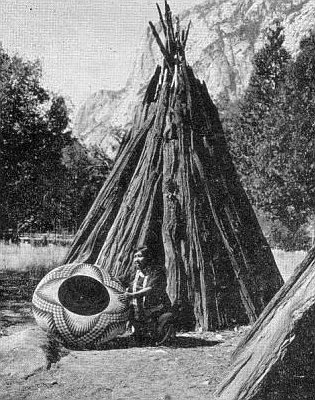 We will let the author of Tending the Wild speak for Native Americans, based on her extensive research of their culture and land-management practices:
We will let the author of Tending the Wild speak for Native Americans, based on her extensive research of their culture and land-management practices:
“Although native ways of using and tending the earth were diverse, the people were nonetheless unified by a fundamental land use ethic: one must interact respectfully with nature and coexist with all life-forms. This ethic transcended cultural and political boundaries and enabled sustained relationships between human societies and California’s environments over millennia. The spiritual dimension of this ethic is a cosmology that casts humans as part of the natural system, closely related to all life-forms. In this view, all non-human creatures are ‘kin’ or ‘relatives,’ nature is the embodiment of the human community, and all of nature’s denizens and elements—the plants, the animals, the rocks, and the water—are people. As ‘people,’ plants and animals possessed intelligence, which meant that they could serve in the role of teachers and help humans in countless ways—relaying messages, forecasting the weather, teaching what is good to eat and what will cure an ailment.” (1)
We emphasize that Native American culture considered humans a part of nature because this viewpoint provides contrast to modern interpretations of the relationship between humans and nature.
Exploitation of nature by early settlers
When Europeans began to establish settlements in California in the late 18th century, they brought with them an entirely different viewpoint about their relationship with nature. Natural resources were to be exploited and humans were the master of the natural world which was in their service.
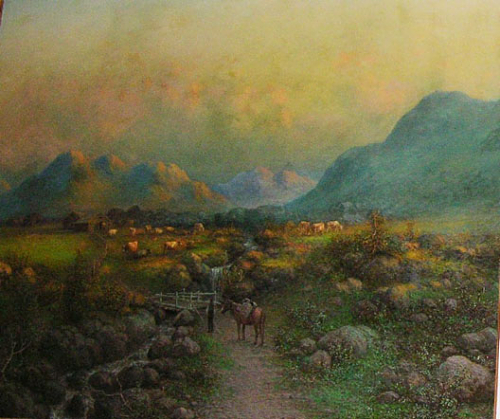
The first phase of European settlement was the importation of huge herds of livestock by the Spanish coming from Mexico:
“During the Mission era…grazing was among the activities that caused the greatest damage. Coastal prairies, oak savannas, prairie patches in coastal redwood forests, and riparian habitats, all rich in plant species diversity and kept open and fertile through centuries of Indian burning, became grazing land for vast herds of cattle, sheep, goats, hogs, and horses owned by Spanish missions and rancheros. By 1832 the California missions had more than 420,000 head of cattle, 320,000 sheep, goats, and hogs, and 60,000 horses and mules…overgrazing eliminated native plant populations, favored alien annuals, and caused erosion…A great variety of alien [plant] species were introduced inadvertently during the Mission Period. Research has shown that European forbs and grasses…were brought into California at this time, contained in adobe bricks, livestock feed, livestock bedding, and other materials. Soon these alien [plants] overwhelmed the native species, markedly changing the character and diversity of grasslands and other habitats west of the inner Coast Ranges.” (1)
Tending the Wild reports that during this early phase of European settlement, Native Americans were quick to adapt to the changing landscape. They incorporated useful new plants into their diets. Likewise, we see today new plants and animals quickly enter the food web.
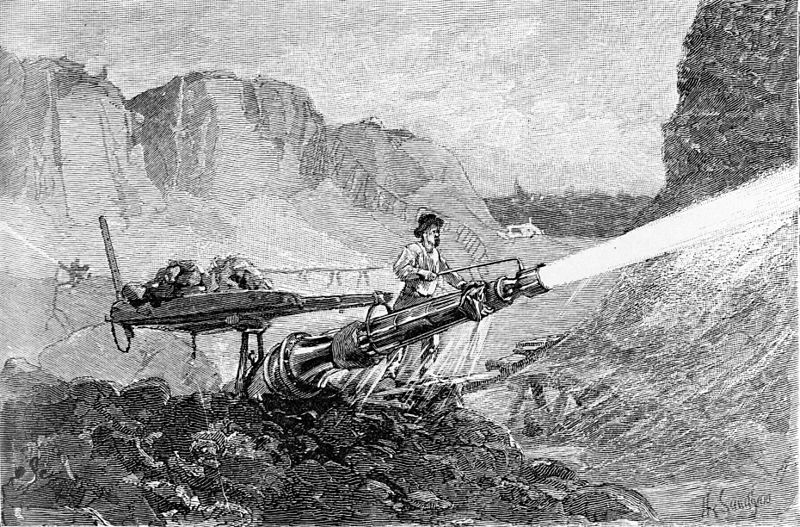
These changes in the landscape paled in comparison to the exploitation of the land that began in 1849 when gold was discovered in California and the huge influx of Americans of diverse European descent arrived. Here are a few examples:
- “…by the 1870s ‘more men made their living in the broader geography and economy of farming—48,000—than in all the mines of the Sierra footholls—36,000.’ To accommodate the acreage devoted to growing crops, marshes were drained, underground water was tapped by artesian wells, streams and rivers were dammed and diverted for irrigation, and lands were fenced. In the process huge tracts of former native grasslands, riparian corridors, and vernal pools were converted to artificial, human-managed agricultural systems.” (1)
- “Five million acres of wetland in California have been reduced by 91% through diking, draining, and filling for agriculture, housing, or other purposes.” (1)
- By 1900, 40% of California’s 31 million acres of forest were logged.
- “By the early 1900s, the numbers of marine mammals, wildfowl, elk, deer, bear, and other birds and mammals had been so drastically reduced that Joseph Grinnell would write, ‘Throughout California we had been forcibly impressed with the rapid depletion everywhere evident among the game birds and mammals.’” (1)
- Between 1769 and 1845, the population of Native Americans in California dropped from an estimated 310,000 to 150,000. Between 1845 and 1855, the population of Native Americans dropped from 150,000 to 50,000.
Romanticizing Nature
Meanwhile, in Europe and the East Coast of the US, a new view of nature was being articulated. The Romantic movement viewed nature as an escape from the stress of urban life, a tranquil retreat from civilization. In California, John Muir was strongly influenced by Romanticism:
“Muir and those with similar views responded to the destruction and exploitation of California’s natural resources with a preservationist ethic that valued nature above all else but which defined nature as that which was free of human influence. Thus while he championed the setting aside of parks as public land, Muir also contributed to the modern notion that the indigenous inhabitants of the state had no role in shaping its natural attributes.” (1)
Muir was unable to fit Native Americans into his idealized view of nature. He wrote this account of Miwok Indians in the Sierra Nevada in 1869:
“’We had another visitor from Browns’ Flat to-day, an old Indian woman with a basket on her back. Her dress was calico rags, far from clean. In every way she seemed sadly unlike Nature’s neat well-dressed animals, though living like them on the bounty of wilderness. Strange that mankind alone is dirty. Had she been clad in fur, or cloth woven of grass or shreddy bark, like the juniper or libocedrus mats, she might have seemed a rightful part of wilderness; like a good wolf at least, or bear. But no point of view that I have found are such debased fellow beings a whit more natural than the glaring tailored tourists we saw that frightened the birds and the squirrels.’” (1)
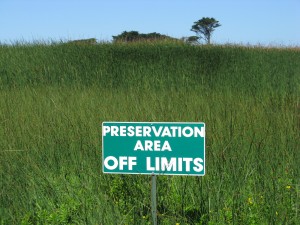
In this romanticized view of nature, humans are not welcome. Humans defile the purity of nature. This is the prevailing viewpoint today among those who consider themselves environmentalists, park advocates, and conservationists. They advocate for “wilderness” where “humans may visit, but not remain.” They post signs, advising visitors to look but not touch. Their “restoration” projects put nature behind a fence. They complain about immigration.
The condescending attitude articulated by John Muir toward Native Americans was instrumental in our ignorance of their land management practices. Europeans considered Native Americans primitive and therefore did not expect to learn anything useful from them. Europeans imported and grew their own food from their original homes because they were unaware of how local food sources could be grown and used. Our knowledge of Native American culture is recent and it comes too late to ever be fully informed because those who tended the land are long since gone. Furthermore, this new knowledge of land management practices of Native Americans is not well known, certainly not among native plant advocates who are attempting to re-create a landscape which was created by methods they do not understand.
Redefining ecological “restoration”
The author of Tending the Wild admires Native American culture as well as the landscape that was created by their land management practices. Therefore, she concludes her book with a proposal that we adopt their land management methods:
“What then, should be the goal of ecological restoration? Restoring landscapes and ecosystems to a ‘natural’ condition may be impossible if that natural condition never existed…Restorationists must at the very least acknowledge the indigenous influence in shaping the California landscape. This chapter advocates an additional step—using indigenous people’s knowledge and methods to carry out the restoration process, to return landscapes to historical conditions and restore the place of humans in this continuing management.” (1)
In our previous post, we described some of the land management practices of Native Americans, particularly the importance of setting fires. Adopting these management practices for ecological restorations would require us to make a permanent commitment to setting fires. Fires pollute the air, release greenhouse gases into the atmosphere, and endanger lives and property. Therefore, this is surely not a proposition that can be reasonably applied to our densely populated urban parks. The maximum population of Native Americans prior to the arrival of Europeans is estimated to have been 310,000. The population of California was estimated to be over 38 million in 2013. Land management practices that were appropriate for a human population of only 310,000 are not appropriate for a population of over 38 million.
Furthermore, the land management practices of Native Americans were useful for their culture. They tended the landscape in order to feed, clothe, heal, and house themselves. If that specific landscape is no longer useful for those purposes, why would we consider it an ideal landscape? In what sense would it be superior to the landscape that occurs naturally without setting fires or intensively gardening our open spaces?
A more realistic paradigm is needed
We believe a more sustainable paradigm for managing nature is needed. Although we won’t presume to define this new paradigm, we will suggest some parameters:
- Humans are as much a part of nature as any other animal. Therefore, conservation goals must accommodate the presence of humans. However, humans must respect plants and animals as equal partners in achieving conservation goals.
- Since we live in a free society, we must assume that human populations will grow in proportion to the choices of humans. And since we are a nation of laws, we must assume that immigration will occur as allowed by our laws. Conservation goals must be consistent with the realities of human population density.
- Conservation goals should look forward, not back. Goals should reflect the changes in the environment that have already taken place and anticipate the changes that are expected in the future.
- The distinction between native and non-native species should be only one of several criteria to determine whether a species “belongs here.” If plants and animals are sustaining themselves without human subsidy, we should acknowledge and appreciate the functions they perform in the ecosystem. This approach will reduce the use of herbicides, now being used to eradicate plants perceived to be “non-native,” in our parks and open spaces.
- Conservation goals should be realistic within the confines of available resources and in competition with other priorities.
- There are pros and cons to every change we make in the landscape. Whenever we alter the landscape, if our land management methods damage the environment by using pesticides, killing animals or destroying their food resources and homes, contributing to greenhouse gases, restricting recreational access, etc., we must have solid evidence that the benefits to the environment will be greater than the damage we foresee. If there is no net benefit, we should leave it be.
Can you add to or suggest revisions of this list of a new conservation ethic? Surely there are as many opinions as there are readers of Million Trees. We would like to hear your ideas.
- M. Kat Anderson, Tending the Wild: Native American Knowledge and the Management of California’s Natural Resources, University of California Press, 2005 (This is the source of most of the information in this article.)
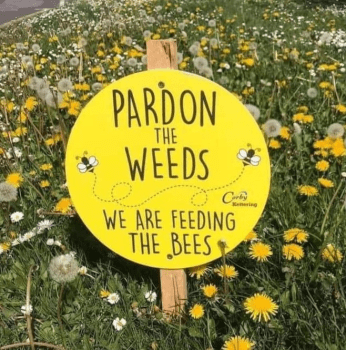
Interesting post, both for the history and the draft of the new conservation paradigm. One thing that might be added is that, although humans are part of nature, we have an extreme capacity for altering/destroying other parts of nature, and that puts us in a different category from most other living things. Maybe a more positive thing to say, along these lines, is that we have a special responsibility to act in ways that sustain nature.
Thanks, good suggestion.
Thanks for this interesting and thoughtful summary.
Great post! Lots of good points. Thank you again. Re the conservation ethic: it probably ties in with some of what you’ve already suggested but “first, do no harm” (from early medical doctrines) seems like a useful starting point for intervention.
Yes, “first, do no harm” is an excellent starting point. Thanks for the suggestion.